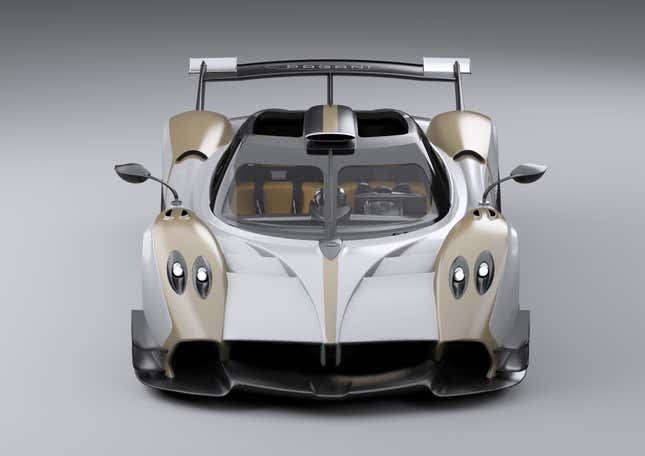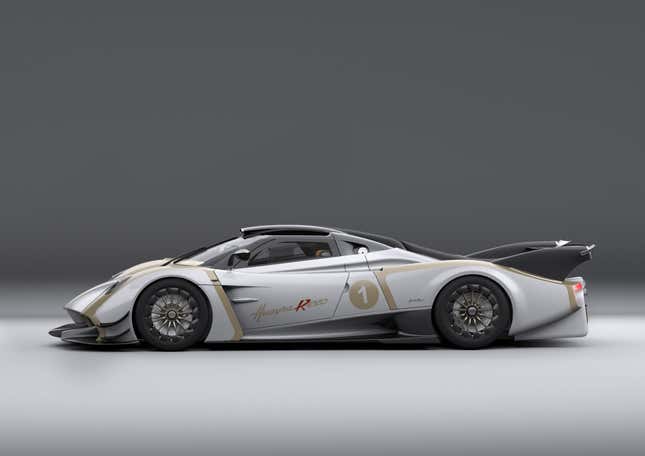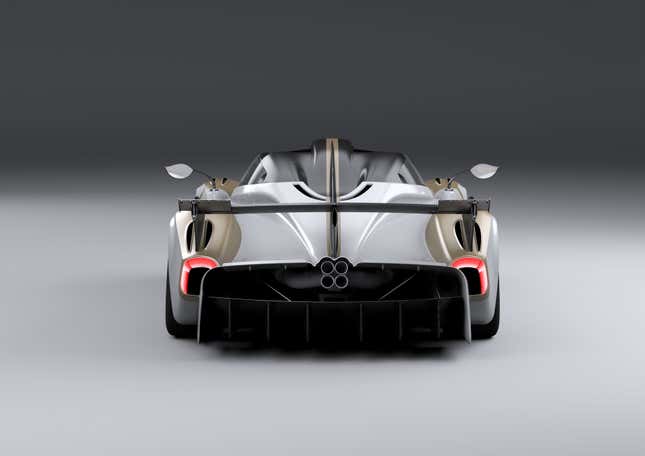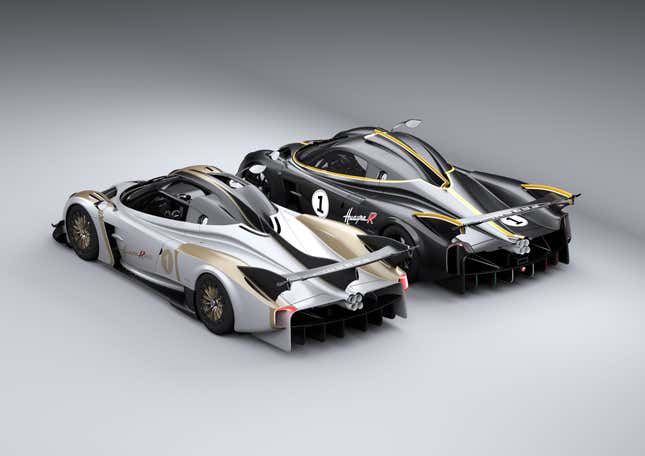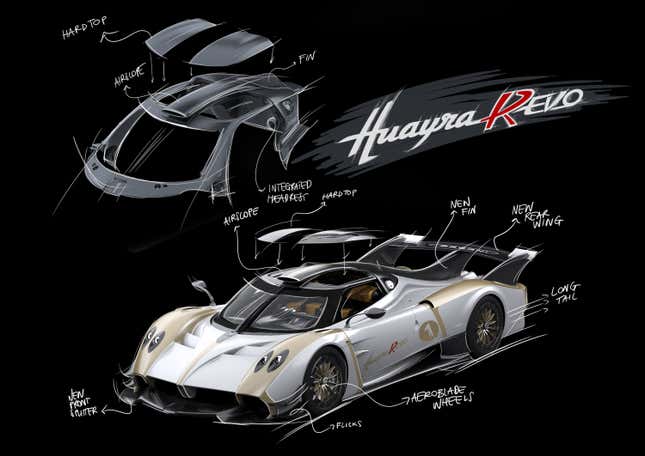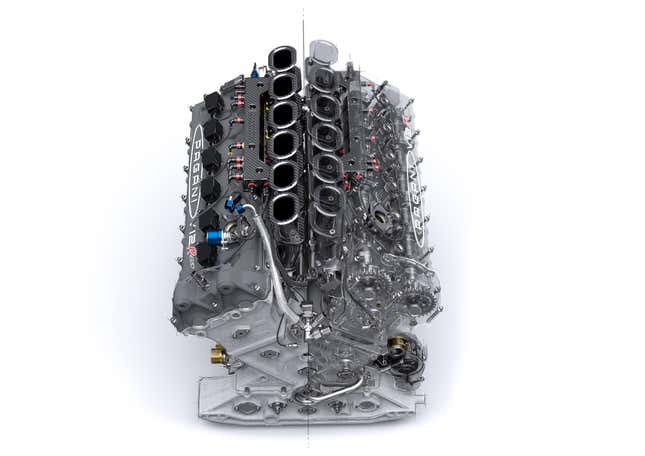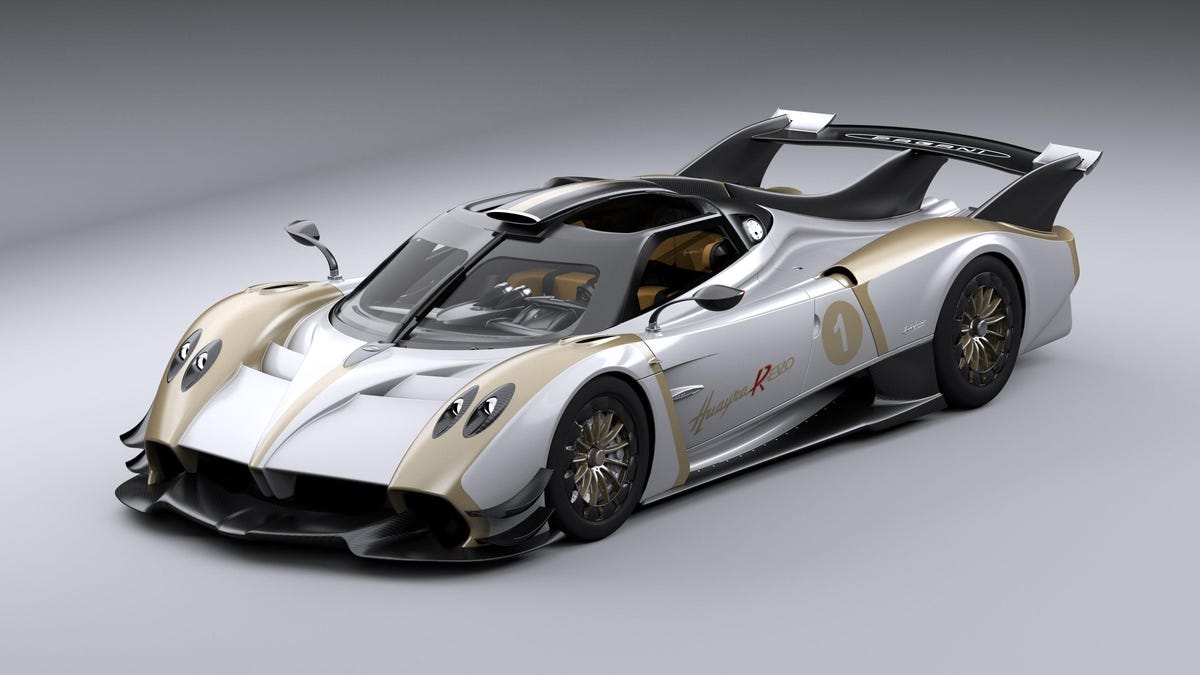It can be hard to keep up with every release from Pagani, especially as the Italian hypercar brand keeps pumping out new versions of “discontinued” models like the Zonda and Huayra despite the new Utopia being out. But Pagani’s latest track-only special is worth paying attention to. Not only does the new open-top Huayra R Evo exceed the performance of past track-only Paganis, the company says it matches the performance of LMP2 Le Mans prototype race cars — and it looks phenomenal doing it.
The Huayra R Evo uses the ultra-limited Codalunga’s longtail body as its base, with a 7.5-inch-longer rear end than the standard Huayra R. Its large fixed rear wing has an amazing center fin that flows off of the roof, and the diffuser has been streamlined. Pagani also extended the front splitter by 4 inches, added additional aero flicks, redesigned the side skirts, increased the size of the aerodynamic underbody, and developed a new ducting system to better cool the brakes and radiator. Downforce has been increased by a whopping 45 percent and aerodynamic efficiency is up by 21 percent, and Pagani says the Huayra R Evo generates more vertiical aerodynamic load at 199 mph than the car’s total weight.
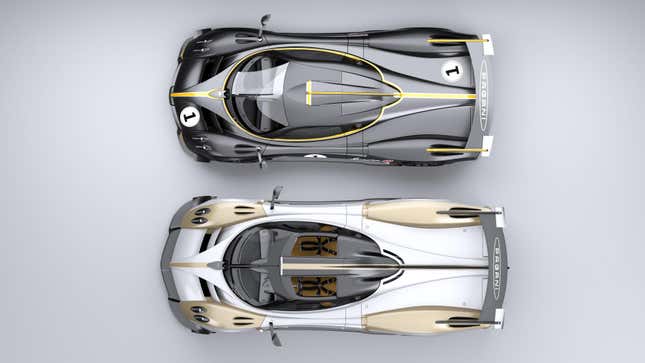
What really sets the Huayra R Evo apart from both the Codalunga and other track-only Paganis is its greenhouse and roof setup. The windshield has a thick surround and a center bar that the wiper rests on, inspired by the Aeroscreens of Indycar racers. A large roof scoop sits at the center of the roof, with removable panels on either side — that’s right, this multi-million-dollar hypercar has T-tops! Pagani says the open roof unexpectedly improves the aerodynamics of the car, increasing total downforce by five percent. The Huayra R Evo uses Pagani’s latest carbon-fiber, which has upped stiffness by 38 percent and reduced overall weight.
Backing up the improved aerodynamics is a massively powerful engine developed with HWA AG. The Huayra R Evo’s naturally aspirated 6.0-liter V12 puts out 888 horsepower at 8,750 rpm and 568 pound-feet of torque from 5,800 to 8,200 rpm, with a redline of 9,200 rpm. That’s 50 hp, 15 lb-ft and 200 rpm up from the standard Huayra R, and it has a new intake manifold, camshafts and an improved trumpet design. The quicker-shifting 6-speed sequential gearbox weighs just 176 pounds and is integrated structurally with the suspension, engine and monocoque.
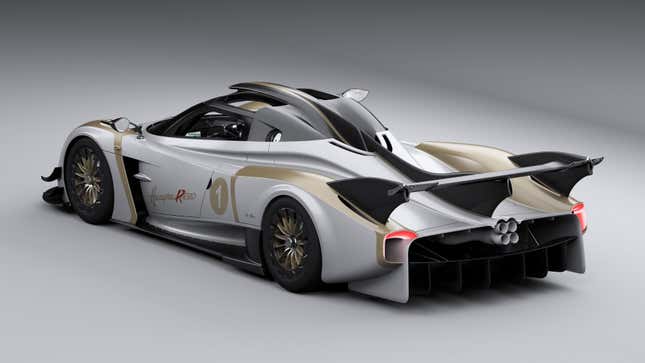
The suspension has been redesigned, with a new heave damper that Pagani says “separates the management of the car-body heights from the independent dampers.” There are new Brembo CCM-R self-ventilated carbon-ceramic brakes that have a 14-percent increase in braking area of the discs and pads, offering improved thermal management, durability and braking power. Also new are the Pirelli P Zero racing slicks, which measure 280/680 R19 up front and 345/725 R20 in the rear and are offered in both dry and wet versions.
Pagani hasn’t announced how much the Huayra R Evo will cost or how many will be made. Thirty units of the old Huayra R were built at around $3 million each to start; expect the R Evo to add at least another million on top of that. Customers will be enrolled in Pagani’s ‘Arte in Pista’ program, which offers a calendar of non-competitive track events at FIA circuits around the world with full technical support from Pagani’s team of engineers, mechanics, professional drivers, physiotherapists and nutritionists.
